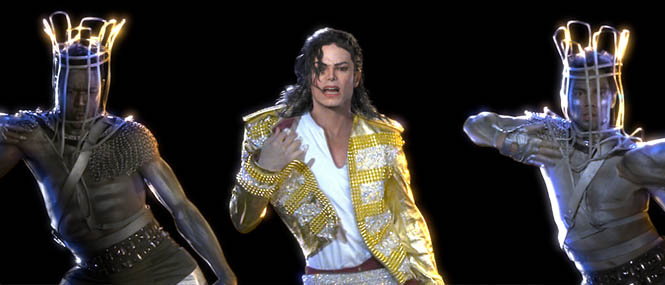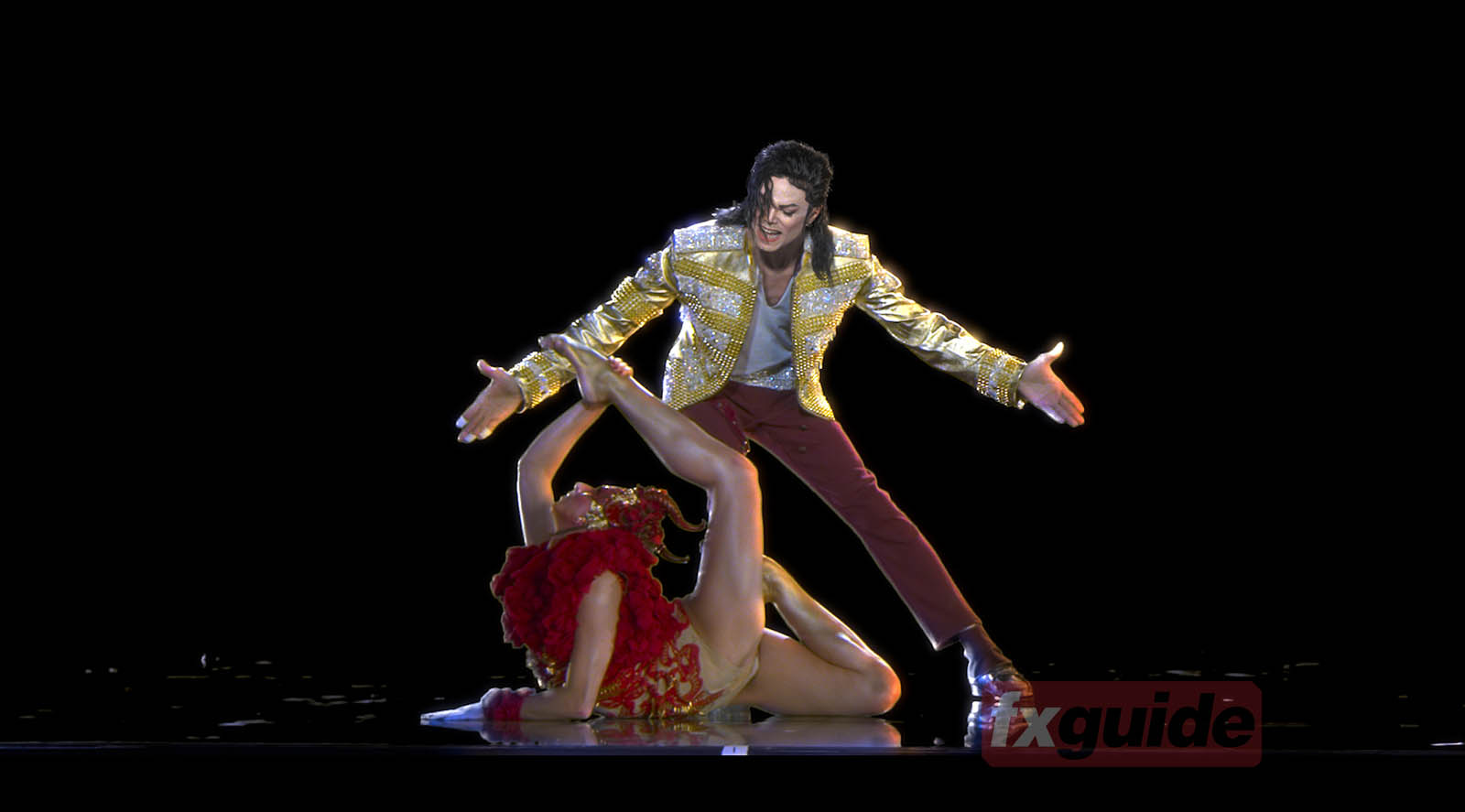Well didn't I say similar things?
Michael Jackson 'Hologram' Show Sparks New Legal Crossfire (Exclusive)
12:11 PM PDT 6/19/2014 by Eriq Gardner
The latest move is a $10 million lawsuit against Alki David, following his attempt to nix the King of Pop's return at the Billboard Music Awards.
It's now been a month since a Michael Jackson recreation at the Billboard Music Awards earned heavy buzz. In the days leading up to the spectacle, Hologram USA, owned by firebrand entrepreneur Alki David, attempted to stop it by claiming it infringed patented hologram technology that he had exclusively licensed. The Billboard Awards performance was allowed to happen, but the dispute is hardly over.
On Thursday, a new $10 million lawsuit was filed by Pulse Entertainment, whose animators and technicians spent many months preparing the Billboard Awards show. In a complaint filed in U.S. District Court in Los Angeles, Pulse is attacking David as a "charlatan who had no involvement whatsoever in the development of the Michael Jackson animation."
The move follows David's own lawsuit, which originally named Prometheus Global Media, parent of Billboard Music Awards producer Dick Clark Productions (PGM also is THR's owner), among the defendants. But now the case has been amended mostly to focus on Pulse and its chairman John Textor. The executors of the Michael Jackson estate are among the other defendants.
Both sides present their own tale of what has happened.
According to Pulse's complaint, David "falsely claimed credit for creating and developing the visual effects spectacle in a nationally-televised interview on CNN, in press releases and on his various websites operated by his company, FilmOn."
The lawsuit paints David as being famous for his outrageous antics and being a "notorious infringer of intellectual property rights," specifically referring to his well-publicized battles with TV broadcasters. The plaintiff is upset with David's alleged efforts to "divert public and industry attention away from Pulse Entertainment just as the company was being launched," asserting that it rises to unfair business competition practices and trade libel.
What's more, Pulse says that in the days leading up to the Billboard Music Awards, David attempted a "shakedown" by demanding credit — all on the basis of patent licensing from "a defunct company with no assets that had nothing to license in the first place."
That "defunct" company is Musion Das Hologram Limited, said by David to be connected to Europeans named Giovanni Palma and Uwe Maas. Where things get confusing is that Pulse has been dong with business with a company called Musion Systems Limited, apparently connected to two more Europeans named Ian O'Connell and William James Rock.
How hologram-like technology was created, who owns proper rights and what exactly is going on with these Musion companies is something that will have to be addressed in this case or elsewhere soon.
For now, what's important is that David's company claims a hold on technology said to be a new version of a 19th century stage trick called "Pepper's Ghost," involving the projection of two-dimensional images into a three-dimensional stage set. According to Hologram USA, the technology was famously used to create the late Tupac Shakur performing at the 2012 Coachella Music Festival.
David says he outbid Textor's Digital Domain unit to acquire rights to the technology last February, and that Textor's Pulse "elected to ignore the rights they previously sought to obtain" in the creation of a posthumous performance by Michael Jackson.
David's amended complaint (read it here) goes onto assert that it "rejected a proposal made by Textor and Pulse for a joint marketing agreement over the technology in April and May 2014 – days before Textor and Pulse used that technology without authorization to create the Jackson hologram."
Back to Pulse's new lawsuit: The fact that David insists upon calling it a "hologram" in media interviews is noted. According to its complaint (read it here), "This mischaracterization of the [Michael Jackson] animation as a hologram highlights David's complete lack of technical expertise and involvement in the creation and development of the Michael Jackson Animation, insofar as the virtual Michael Jackson appearing at the Billboard Award Show was not a hologram at all, rather, it was an animation projected onto a screen. This distinction is lost on David, because he is nothing more than a fraud claiming credit for Pulse Entertainment's animation."
Is the distinction important?
David's lawsuit points to a USA Today story (with comments given by Textor and Pulse CEO Frank Patterson) that says Pulse refined the magician's technique called Pepper's Ghost, and that the technology was used to recreate Tupac.
"After Plaintiffs moved for a temporary restraining order in these court proceedings to enjoin Defendants from using the Patented Technology to create the Jackson hologram at the Billboard Music Awards, Defendants argued to this Court that they would not use the patented technology to create the Michael Jackson hologram," states David's amended complaint. "That argument is belied by the actual evidence. Initially, Textor attempted to obtain rights to the Patented Technology in the months and days leading up to the Billboard Awards because he knew those rights were required."
David's company, represented by lawyers Craig Newby and Ryan Baker, says that his legal adversaries "have created significant confusion in the marketplace" and "diluted the value of the Hologram USA brand," getting in the way of its discussions to do recreations of Elvis Presley and Bob Marley.
Pulse, represented by Marty Singer and Todd Eagan, responds that David has hijacked the launch of the company and has similarly caused "immeasurable harm" to its "public relations, its reputation and brand."
Bottom line: The business of dead stars has a very live fight.
http://www.hollywoodreporter.com/thr-esq/michael-jackson-hologram-show-sparks-713109






